 |
 |
 |
| |
DISPARITIES IN TIMELY RECEIPT OF ART PRESCRIPTION IN HIV CARE IN THE US, 2012-2018
|
| |
| |
CROI 2021 March 6-10 Reported by Jules Levin
Jun Li1, Elizabeth Humes2, David B. Hanna3, Jennifer S. Lee2, Keri N. Althoff2, Richard Moore2, Heidi Crane4, Jonathan Colasanti5, Michael A. Horberg6, Ank Nijhawan7, Gypsyamber D'Souza2, Christopher T. Rentsch8, Kelly Gebo2, Kate Buchacz1, for for the North American AIDS Cohort Collaboration on Research and Design (NA-ACCORD) of IeDEA
1Centers for Disease Control and Prevention, Atlanta, GA, USA, 2The Johns Hopkins Bloomberg School of Public Health, Baltimore, MD, USA, 3Albert Einstein College of Medicine, Bronx, NY, USA, 4University of Washington, Seattle, WA, USA, 5Emory Center for AIDS Research, Atlanta, GA, USA, 6Kaiser Permanente Mid-Atlantic States, Rockville, MD, USA, 7University of Texas Southwestern, Dallas, TX, USA, 8VA Connecticut Healthcare System, West Haven, CT, USA
Background: Since 2012, the U.S. Department of Health and Human Services (DHHS) has recommended ART for all people with HIV (PWH) regardless of CD4 count. We studied trends in and sociodemographic and clinical disparities in timely receipt of ART prescription (ART) from 2012-2018.
Methods: We examined HIV treatment-naïve adults who newly presented to HIV care (i.e., HIV viral load [VL] >500 copies/mL and no clinical AIDS diagnosis >30 days prior to entry into care) at 13 U.S. NA-ACCORD clinical cohorts who had a recorded CD4 at presentation during 2012-2018. We calculated cumulative incidence of timely ART (within 30 days of entry into care) using the Kaplan- Meier survival function by year of entry into care, with additional stratifications by the period of entry into care (2012-2015 vs. 2016-2018) and by race/ethnicity or geographic region. Discrete time-to-event models were fit to assess trends in timely ART by calendar year adjusted for age, sex, risk group, race/ethnicity, geographic region, AIDS diagnosis, history of alcohol or drug dependence/ abuse, mental health diagnoses, and CD4 and VL at presentation, overall and stratified by the period of entry into care.
Results: Among 11,853 eligible treatment-naïve PWH, 48% were men who had sex with men, 14% were women, 45% Black, 15% Hispanic/Latino, 32% aged 18-29, and 7% aged ≥60 years. Cumulative incidence of timely ART increased from 42% in 2012 to 82% in 2018, with gains across race/ethnic groups and regions (Figure). In the multivariable model for 2012-2018, lower rates of timely ART were seen in Black than White PWH (adjusted hazard ratio [aHR] 0.89, 95% confidence interval [CI] 0.83-0.94), PWH living in the South than the West (aHR 0.78, CI 0.69-0.88), and PWH with a history of drug dependence/abuse diagnosis (aHR 0.81, CI 0.74-0.90). In the models for the 2016-2018 period, Black PWH (aHR 0.92, CI 0.83-1.02) and PWH in the South (aHR 0.97, CI 0.75-1.26) no longer had significantly lower rates of timely ART, but PWH in the Northeast had higher rates (aHR 1.37, CI 0.99-1.90) than PWH in the West region; drug dependence/abuse history remained associated with delayed ART (aHR 0.72, CI 0.61-0.85).
Conclusion: Timely ART has substantially improved in the United States since the release of DHHS universal treatment guidelines. Although race/ ethnic and some geographic disparities in timely ART lessened, PWH with drug dependence/abuse diagnosis still had deficits, suggesting the need for additional support services for this population.
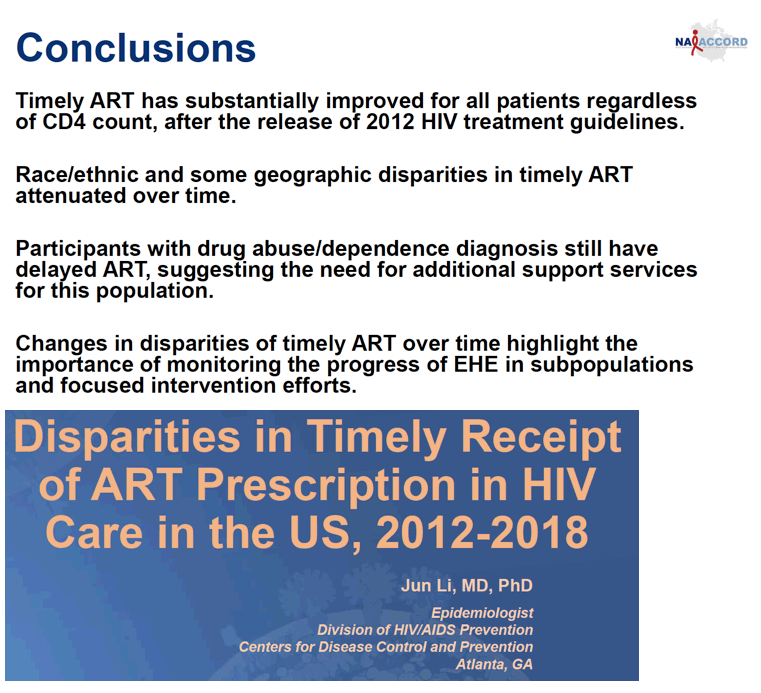
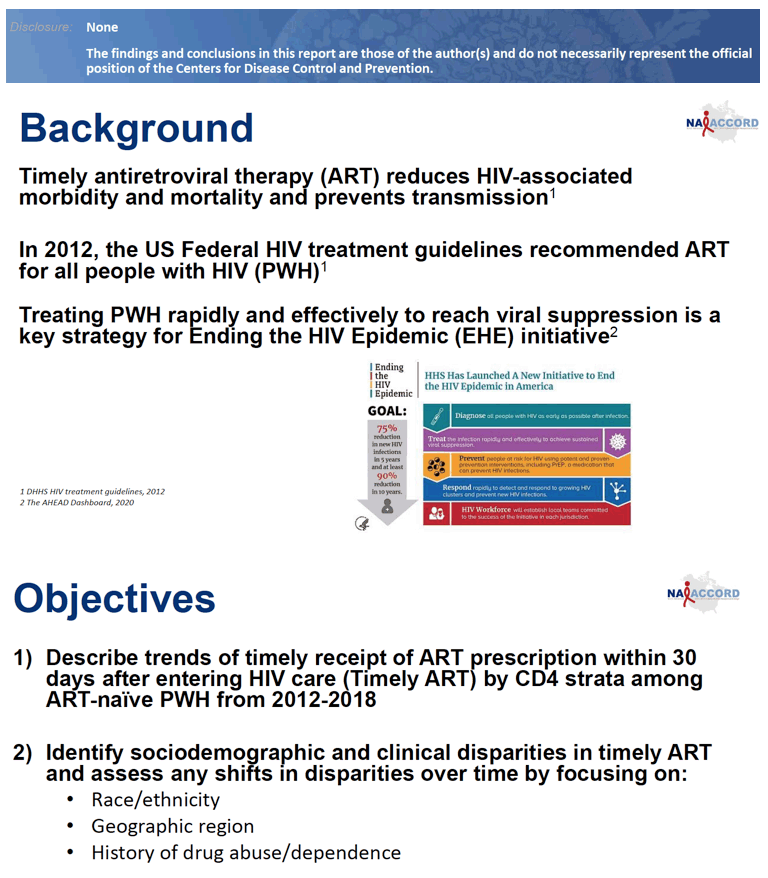
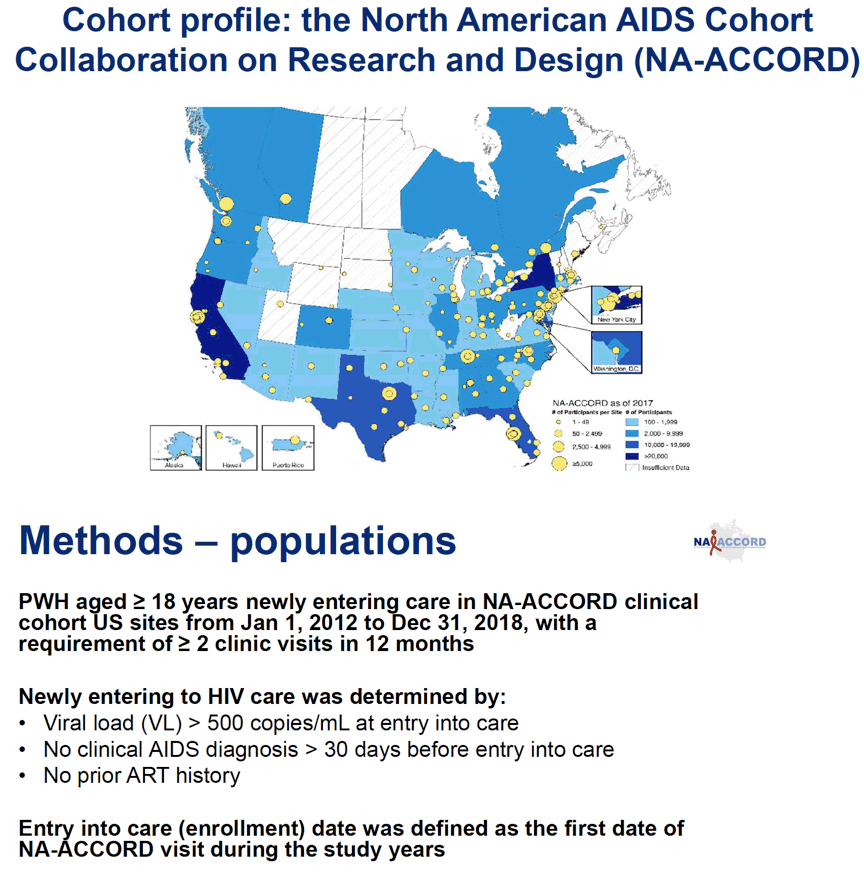
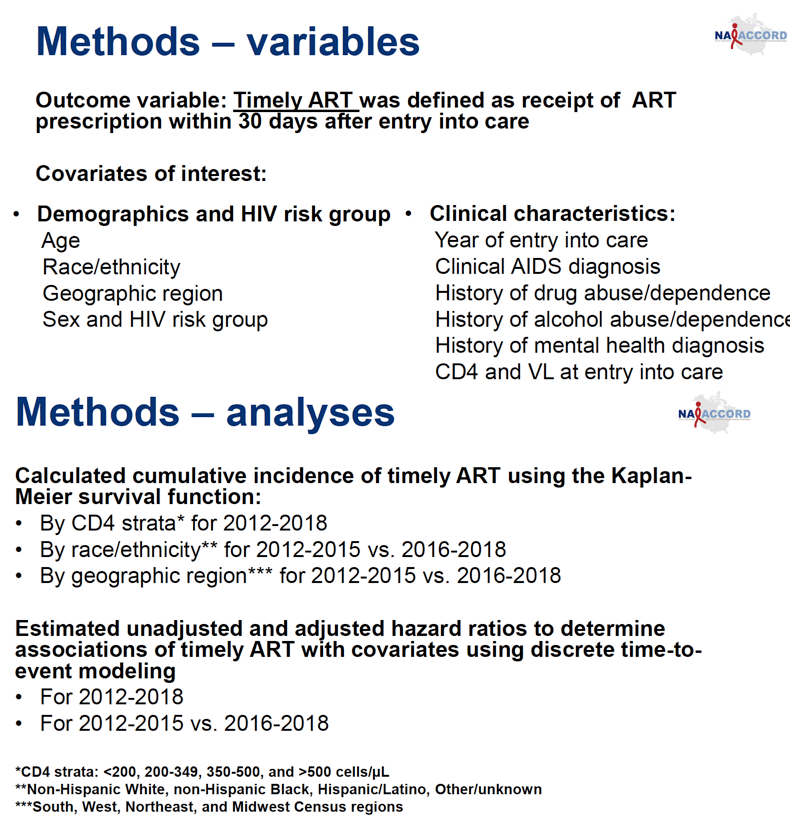
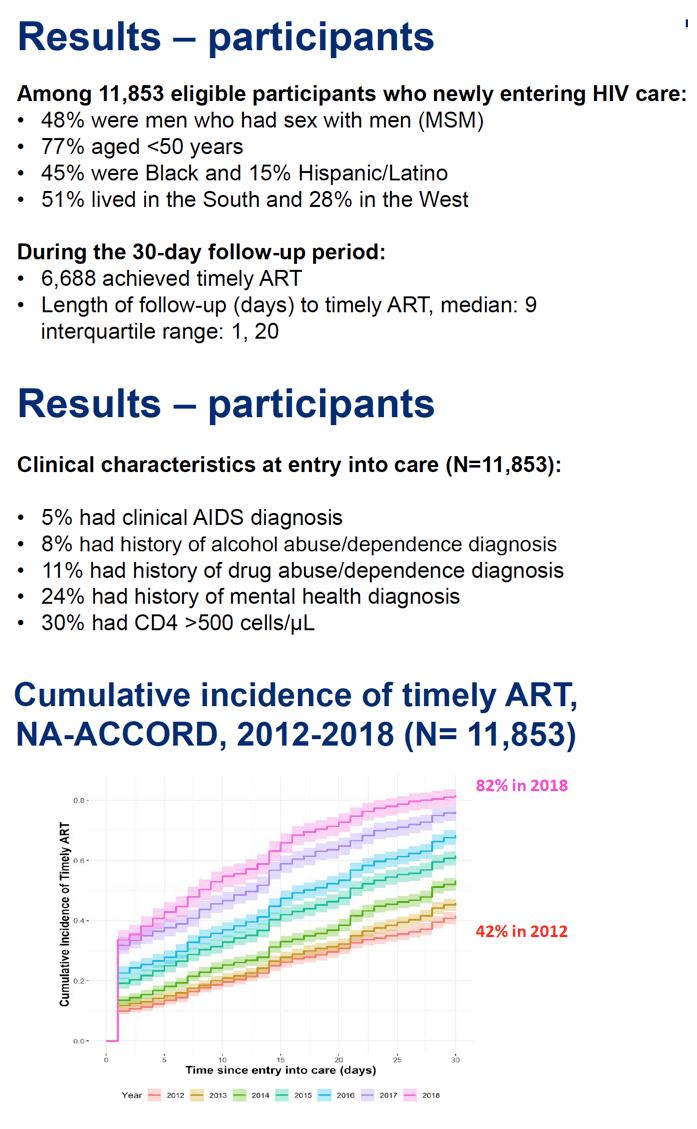
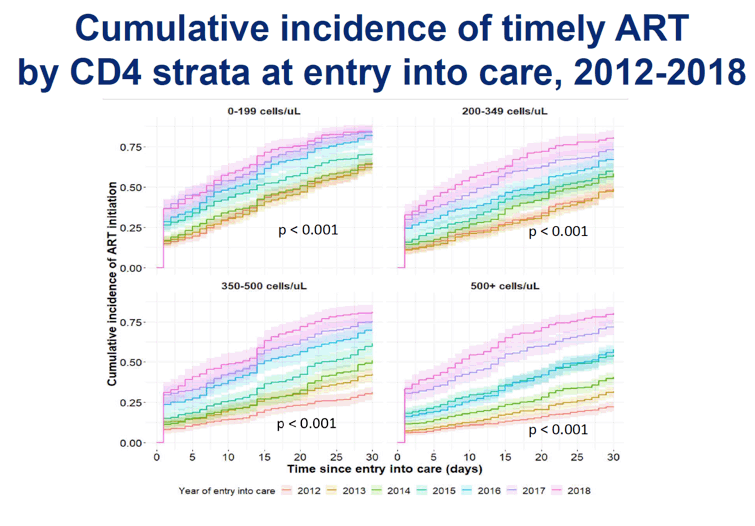
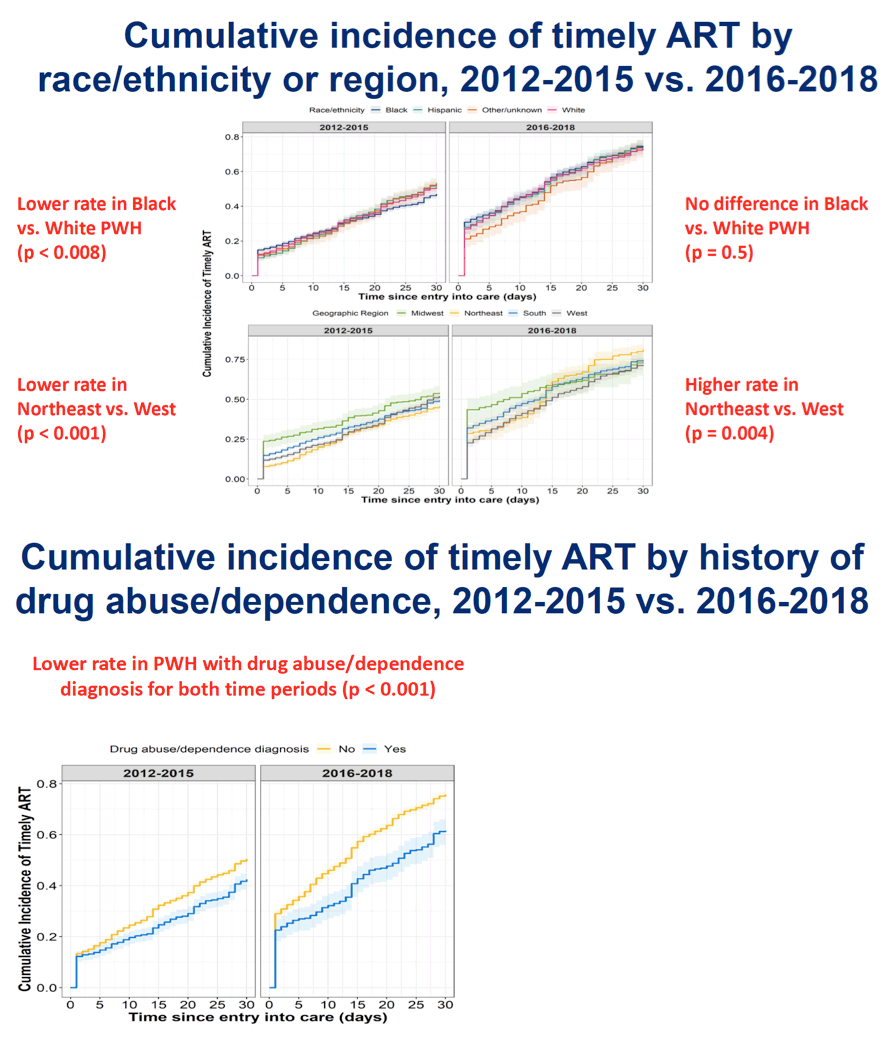
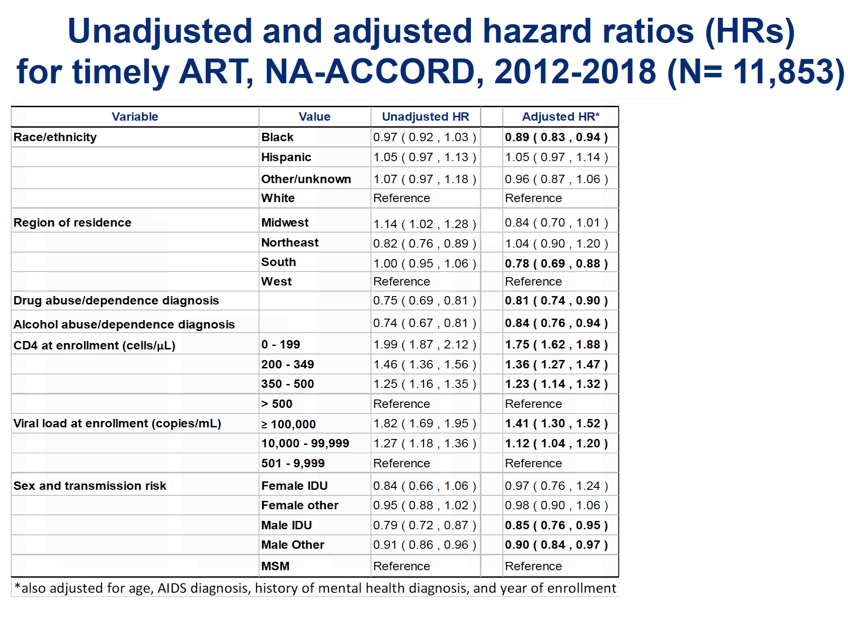
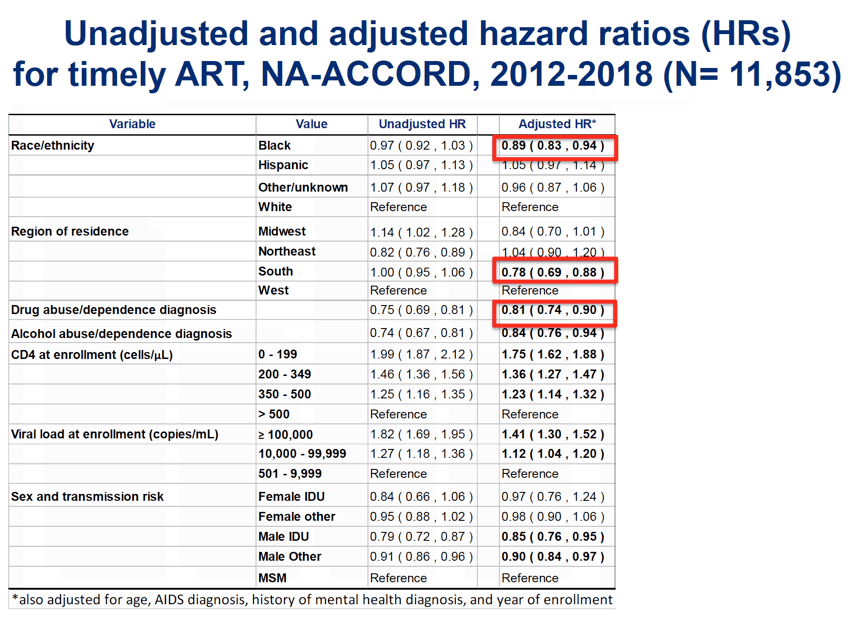
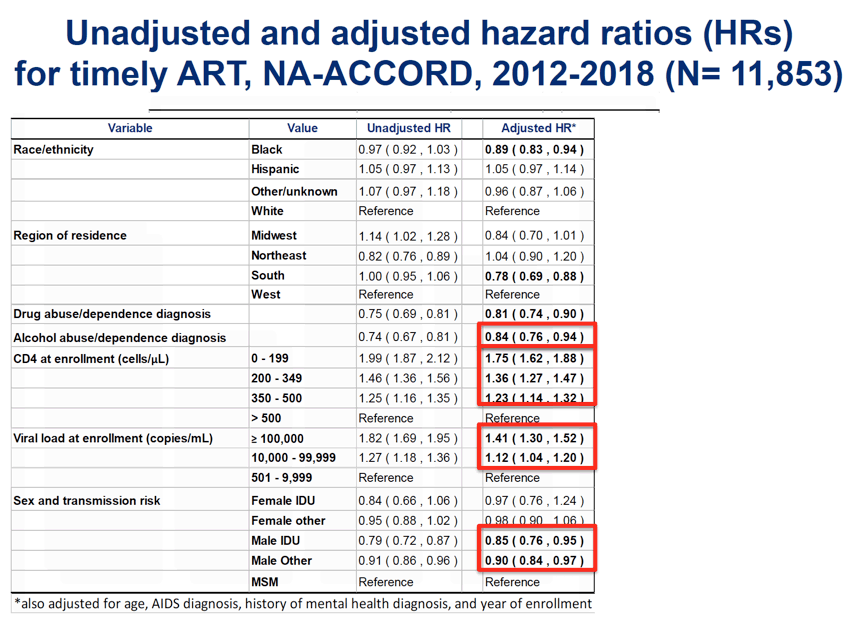
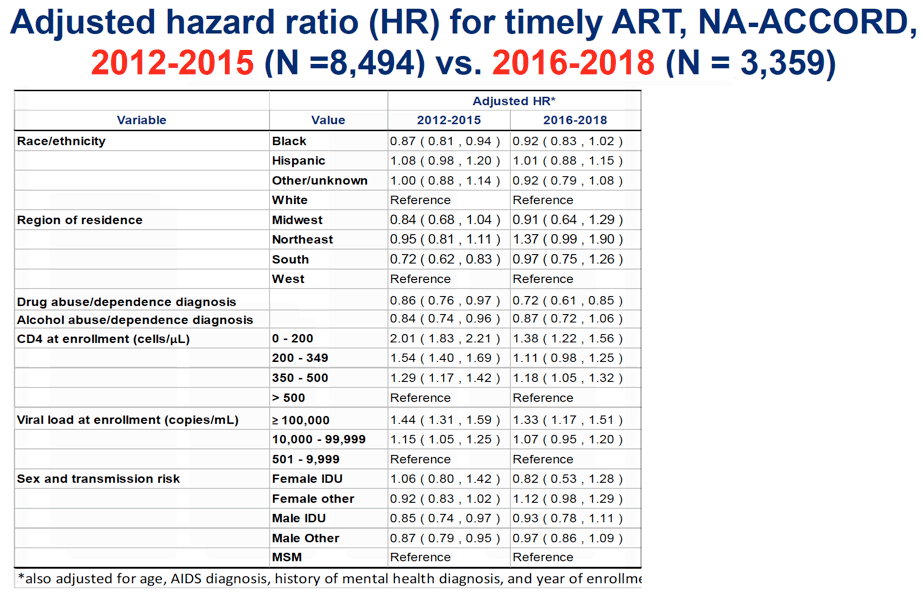
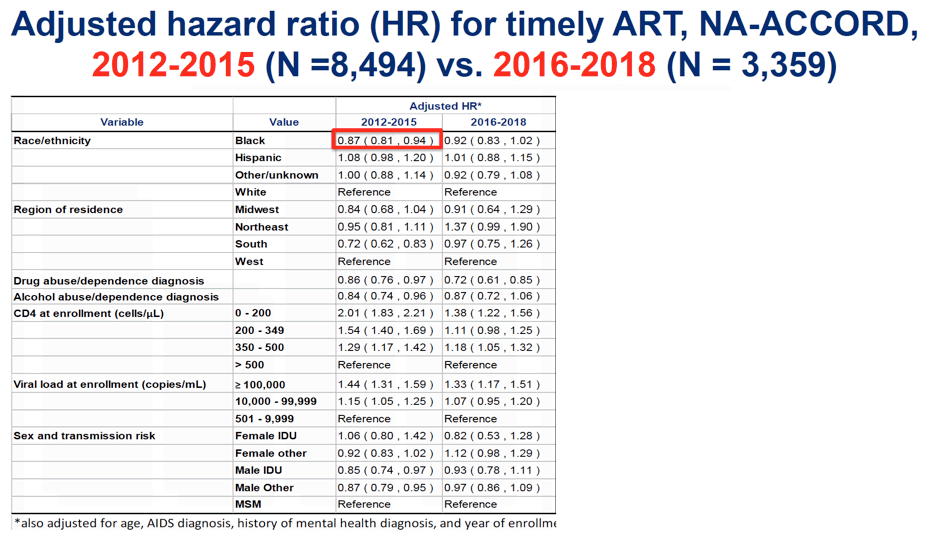
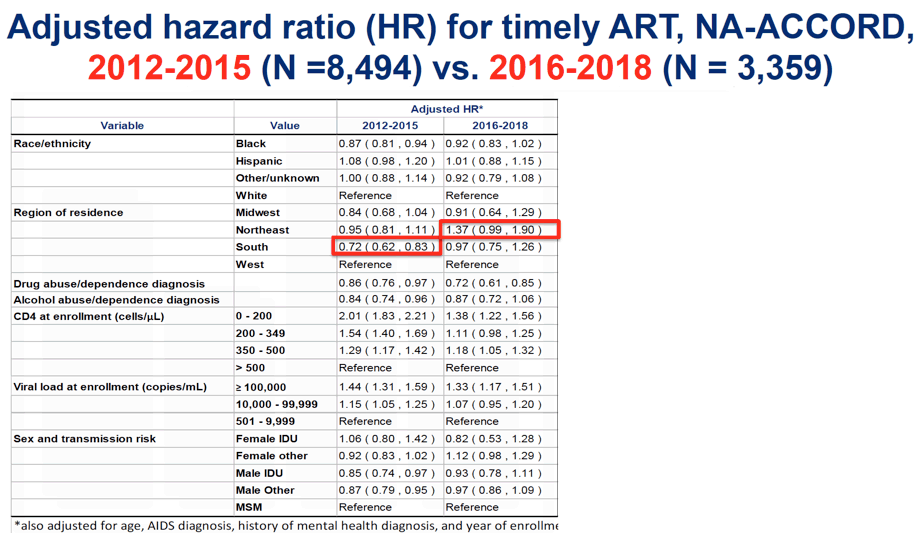
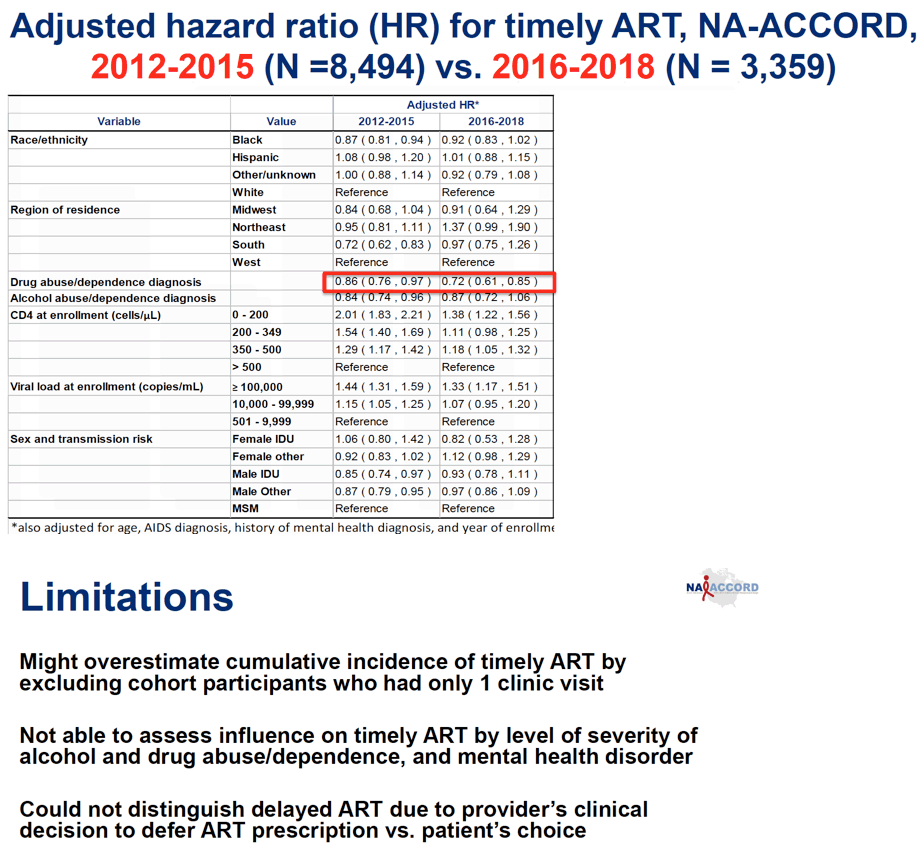
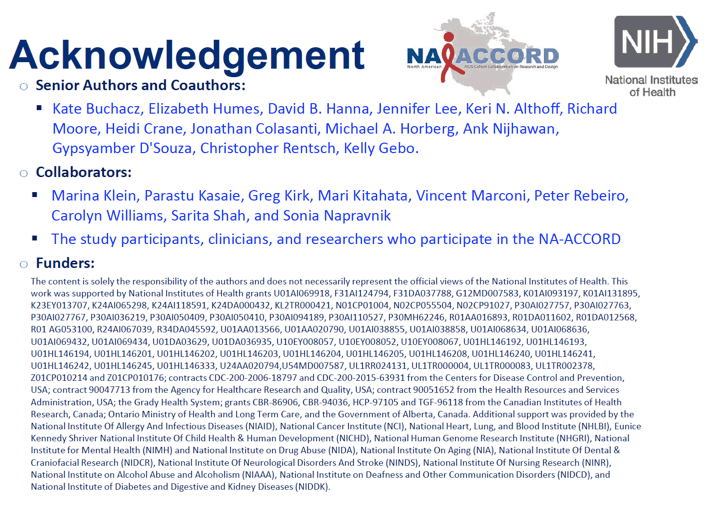
|
| |
|
 |
 |
|
|